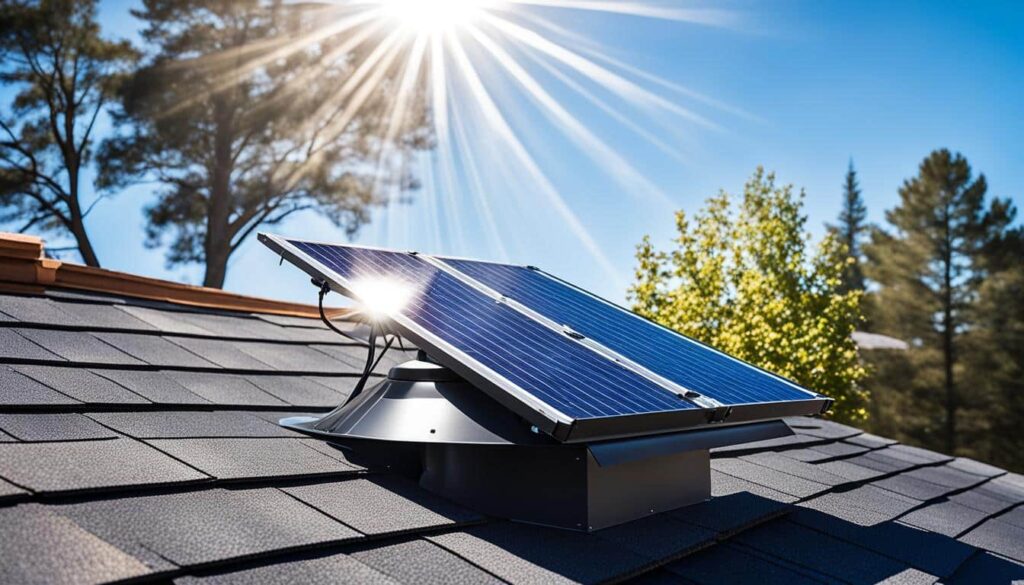Attic Fan Installation: A Sustainable Solution for Environmental Impact
by siteadmin

In the age of climate change and environmental consciousness, homeowners are increasingly seeking sustainable solutions to reduce their carbon footprint and minimize their impact on the planet. Attic fan installation is a simple yet effective measure that not only enhances indoor comfort but also promotes sustainability by reducing energy consumption and environmental emissions. In this blog post, we’ll explore the sustainability benefits of attic fan installation and its positive impact on the environment.
Energy Efficiency and Reduced Cooling Costs:
Attic fan installation offers a sustainable approach to managing indoor temperatures and reducing reliance on mechanical cooling systems such as air conditioners. By expelling hot air from the attic space, attic fans help lower attic temperatures, reducing the heat load on the home’s insulation and roof. This, in turn, reduces the need for air conditioning to compensate for heat buildup, leading to lower cooling costs and decreased energy consumption. By harnessing natural ventilation and passive cooling techniques, attic fans promote energy efficiency and help homeowners reduce their carbon footprint.
Renewable Energy Integration:
Attic fans can be integrated with renewable energy sources such as solar panels, further enhancing their sustainability credentials. Solar-powered attic fans harness the power of the sun to operate, eliminating the need for grid-supplied electricity and reducing reliance on fossil fuels. By generating clean, renewable energy onsite, solar attic fans help homeowners reduce their dependence on non-renewable energy sources and minimize environmental impact. Additionally, solar attic fans operate silently and require minimal maintenance, making them a low-impact, sustainable solution for attic ventilation.
Reduced Environmental Emissions:
Traditional cooling systems such as air conditioners consume large amounts of electricity, resulting in significant greenhouse gas emissions and environmental pollution. Attic fan installation offers a sustainable alternative by reducing the need for mechanical cooling and lowering energy consumption. By promoting natural ventilation and passive cooling, attic fans help reduce the demand for electricity generated from fossil fuels, resulting in lower carbon emissions and decreased environmental impact. This contributes to overall efforts to combat climate change and promote environmental sustainability on a global scale.
Preservation of Natural Resources:
Attic fan installation helps preserve natural resources by optimizing the use of existing building materials and infrastructure. By improving attic ventilation and reducing heat buildup, attic fans help extend the lifespan of roofing materials, insulation, and structural components, minimizing the need for premature replacements and conserving valuable resources. Additionally, attic fans promote energy efficiency and reduce energy consumption, resulting in fewer natural resources being extracted, processed, and consumed for electricity generation. This holistic approach to sustainability contributes to the preservation of ecosystems and habitats while reducing the ecological footprint of residential buildings.
Long-Term Cost Savings:
In addition to environmental benefits, attic fan installation offers long-term cost savings for homeowners. By reducing cooling costs, lowering energy consumption, and minimizing the need for maintenance and repairs, attic fans provide a sustainable solution that pays dividends over time. The initial investment in attic fan installation is often recouped through energy savings and reduced utility bills, making it a financially sound and environmentally responsible choice for homeowners seeking to minimize their environmental impact while enhancing indoor comfort.
Attic fan installation offers a sustainable solution for reducing energy consumption, lowering environmental emissions, and minimizing the ecological footprint of residential buildings. By promoting natural ventilation, harnessing renewable energy sources, and preserving natural resources, attic fans contribute to a more sustainable and environmentally friendly built environment. As homeowners increasingly prioritize sustainability and environmental stewardship, attic fan installation emerges as a practical and effective measure to achieve energy efficiency, reduce carbon emissions, and promote a greener, more sustainable future for generations to come.
In the age of climate change and environmental consciousness, homeowners are increasingly seeking sustainable solutions to reduce their carbon footprint and minimize their impact on the planet. Attic fan installation is a simple yet effective measure that not only enhances indoor comfort but also promotes sustainability by reducing energy consumption and environmental emissions. In this…
Recent Posts
- Powering Proficiency: Training and Education for Electricians
- Powering the Future: Emerging Technologies in the Electrical Industry
- Ensuring Safety: Standards and Regulations in Electrical Work by Electricians
- Troubleshooting Demystified: Common Issues of Electric Panels
- Demystifying Electric Panels: Understanding Their Components
